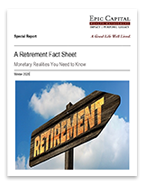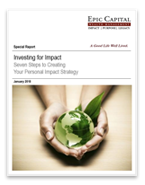Will the Fed’s Bold Moves Keep Bond Yields Up?
Mar 27, 2020
With the major stock market indexes all entering a bear market this month, it’s no surprise that stocks have stolen most of the spotlight. However, actions taken by the Federal Reserve (Fed) to support what may be considered the safest part of the bond market, US Treasuries, may actually have more lasting implications for investors’ portfolios and bond yields.
From February 19 through midday March 9, the yield on the 10-year Treasury fell an incredible 125 basis points (1.25%), briefly reaching an all-time low of just 0.31%. In fact, the 14-day relative strength index RSI on the 10-year yield, a technical measure of momentum, was more oversold than at any point since 1971. Since then yields came roaring back, trading as high as 1.27%, before fading back to near 0.8% currently.
It is logical to think that the incredibly bold moves from the Fed, including unlimited Treasuries purchases, will help keep yields down. But could yields actually rise from here after the Fed writes the bond market a blank check? History says yes, which seems counter-intuitive. For investors, it’s important to keep in mind that the combination of low starting yields and rising interest rates may lead to meager future fixed income returns.
As shown in the LPL Chart of the Day, following prior announcements of quantitative easing (Fed securities purchases), yields have actually risen. Part of that story is the market pricing in higher inflation expectations as a result of the “money printing.” Another piece is the market becoming more confident in economic recovery. “The massive injection of liquidity into the bond market by the Federal Reserve—in concert with fiscal stimulus—surely helps shore up the economy and credit marekts for an eventual recovery,” noted LPL Financial Sr. Market Strategist Ryan Detrick.
LPL Research forecasts the 10-year Treasury yield will end 2020 in the range of 1.25-1.75%. Outcomes outside of that range are certainly possible depending on how long it takes to get the pandemic under control.
If the roughly $2 trillion in fiscal stimulus is added to the Fed’s securities purchases, and additional lending capacity that the Fed’s new programs create, the economy will get a $5-6 trillion jolt in the next several months to help us get through this crisis to the other side. In a $22 trillion US economy, that is significant and far exceeds the stimulus that dug the economy out of a ditch after the 2008-2009 financial crisis. This human crisis is not over unfortunately, but the bold moves from policymakers should help lessen the blow. The size of hit became evident in Thursday’s massive spike in jobless claims. The economic data will get worse before it gets better, but visibility into the peak of this crisis is starting to come into view and markets—both stocks and bonds—may be beginning to sniff that out.
Have a question for our team? Be sure to reach out to a trusted financial professional today.
Tags: Current Events, financial advisor charlotte nc, Investing
More Insights
You’re beginning to accumulate substantial wealth, but you worry about protecting it from future potential creditors. Whether your concern is for your personal assets or your business, various tools exist to keep your property safe from tax collectors, accident victims, health-care providers, credit card issuers, business creditors, and creditors of others. To insulate your property … Continue reading “Estate Planning – Protecting Your Assets”
You know how important it is to plan for your retirement, but where do you begin? One of your first steps should be to estimate how much income you’ll need to fund your retirement. That’s not as easy as it sounds, because retirement planning is not an exact science. Your specific needs depend on your … Continue reading “Estimating Your Retirement Income Needs”
As June begins, markets continue to navigate a complex landscape shaped by trade policy shifts, an uncertain economic and earnings outlook, and bond market headwinds. Several key developments in recent weeks may have implications for markets:
April showers came a month early as stocks fell in March. Tariffs were the primary cause of the market jitters, although that uncertainty became too much for markets to shrug off once economic data started to weaken.
A successful investor maximizes gain and minimizes loss. Though there can be no guarantee that any investment strategy will be successful and all investing involves risk, including the possible loss of principal, here are six basic principles that may help you invest more successfully.
Services
Epic Capital provides the following comprehensive financial planning and investment management services: Learn More >



 Top of Page
Top of Page











